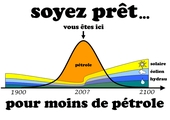chatelot16 wrote:when we look at how performance is measured we come up against 2 problems
1) non-public standards, you would have to pay to have them: this principle is absurd! manufacturers boast that their device meets this or that standard but the customer cannot know what it contains
Yes, and this in all fields / professions! You have to respect the standards, but you have to pay to know them. Insofar as "no one is supposed to ignore the law", I wonder if the state does not have the obligation to make it freely available to all ??? If someone, having a copy of a standard, DTU, technical opinion etc ..., distributes such a document, he falls under the ax of copyright laws. Apparently they are well applied, I have not found them on the net.
That said, the standard sets manufacturing rules such as the minimum thicknesses of the hearth sheets, defines the measurement methods and the minimum performance to be achieved. For example, the EN14785 standard sets the quality of the pellets to be used, and for this requires a humidity of <12%.
So nothing prevents the manufacturer from providing pellets at 3% humidity, which will necessarily improve the result considerably!
I have a smoke analyzer which calculates the yield, it has a "wood" position. I have never succeeded in having the outputs announced by the manufacturers, at best I arrive a little above 80%, around 50% of the maximum power.


